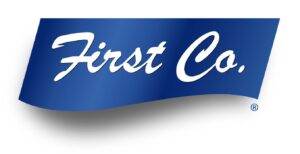Introduction
Managing HVAC systems in multi-occupant structures presents unique challenges. These buildings often require varied temperature settings to meet the preferences of different tenants.
Effective temperature regulation is crucial for comfort and satisfaction in multi-tenant spaces. Whether in office buildings, apartments, or commercial complexes, each zone may have different heating and cooling needs.
Without proper regulation, some areas could become too hot or too cold, leading to discomfort and complaints from tenants. Balancing these needs while ensuring energy efficiency, maintaining indoor air quality, and keeping the systems in good working order can be complex.
Ensuring Optimal Temperature Regulation
Optimal temperature regulation is a major concern in multi-tenant structures. Different areas in a building often have varied heating and cooling needs. To manage this effectively, it’s essential to use zoned HVAC systems. These systems divide the building into different zones, each with its own thermostat. This allows for precise temperature control tailored to specific areas, ensuring everyone remains comfortable.
Another crucial strategy is to incorporate programmable thermostats. These devices can be set to adjust temperatures at different times of the day automatically, matching the occupancy patterns of the building. For instance, offices can have cooler settings during working hours and warmer settings after hours to save energy. Automating temperature settings helps maintain consistent comfort while reducing manual intervention.
Proper insulation also plays a vital role. Well-insulated walls, ceilings, and windows keep heat where it belongs, reducing the load on HVAC systems. Properly sealed windows and doors prevent drafts, which can lead to temperature fluctuations. Using high-quality insulation materials ensures that the building retains heat during winter and stays cool during summer, contributing to optimal temperature regulation.
Enhancing Energy Efficiency and Cost Savings
Energy efficiency is essential in large buildings to control costs and reduce environmental impact. One effective method to enhance energy efficiency is by using energy-efficient HVAC systems. These systems are designed to consume less energy while providing the same level of comfort. Upgrading to high-efficiency units can significantly lower energy bills.
Another important factor is regular maintenance. Well-maintained HVAC systems operate more efficiently. Basic tasks like cleaning or replacing air filters, checking thermostat settings, and inspecting ductwork for leaks can make a substantial difference in energy consumption. Regular tune-ups by professionals ensure that all components are functioning correctly and efficiently.
Implementing energy-saving practices also helps. Encourage tenants to use energy wisely by adjusting blinds to prevent heat gain during summer and retain warmth during winter. Utilizing natural ventilation when possible reduces the need for artificial cooling and heating.
Installing programmable thermostats that adjust settings based on occupancy patterns can further improve energy efficiency. Adopting these practices not only cuts down on energy costs but also supports a sustainable environment.
Improving Indoor Air Quality
Indoor air quality is critical in multi-occupant buildings due to the high density of people and constant activity. Poor air quality can lead to health issues such as allergies and respiratory problems. Installing high-efficiency particulate air (HEPA) filters is one effective way to improve indoor air quality. These filters trap dust, pollen, and other airborne particles, ensuring cleaner air for occupants.
Implementing proper ventilation systems is also essential. Good ventilation helps in removing stale air and bringing in fresh air. This can be achieved through mechanical ventilation systems that continuously exchange indoor air with outdoor air. Ensuring that the building’s ventilation system is balanced and regularly maintained will further enhance air quality.
Regularly cleaning and maintaining HVAC components like ducts, coils, and blower units can prevent the buildup of dust and mold. This reduces the spread of allergens and improves the overall air quality. It’s also helpful to use humidity control systems to maintain optimal humidity levels, as excessive moisture can lead to mold growth and musty odors.
Implementing Regular Maintenance and Upgrades
Consistent maintenance and timely upgrades are crucial for the longevity and efficiency of HVAC systems in multi-occupant buildings. Scheduled inspections should be conducted to identify any potential issues before they turn into major problems. This includes checking the electrical connections, refrigerant levels, and the integrity of all components.
Replacing outdated equipment with modern, energy-efficient models can provide significant benefits. Current HVAC technologies offer greater reliability, lower energy consumption, and better overall performance. These upgrades can enhance the comfort levels within the building and reduce operational costs.
Creating a maintenance checklist can help streamline the process. This should include tasks like checking and replacing air filters, cleaning coils, inspecting ductwork for leaks, and verifying thermostat settings. Engaging a professional HVAC service provider for comprehensive maintenance ensures that the system remains in top condition, delivering peak performance for years to come.
Conclusion
Addressing common HVAC challenges in multi-occupant structures is important for ensuring a comfortable, efficient, and healthy environment. By focusing on optimal temperature regulation, enhancing energy efficiency, improving indoor air quality, and implementing regular maintenance and upgrades, you can achieve significant benefits for both building managers and occupants.
If you’re looking for expert assistance in managing your multi-occupant HVAC systems, look no further than First Co. Our team specializes in providing tailored solutions to meet the unique needs of multi-tenant buildings. Contact us today to learn how we can help you optimize your HVAC system for maximum performance and comfort.

